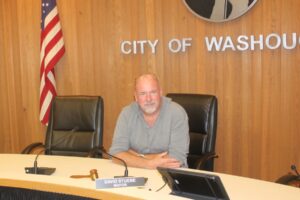It might be a bumpy road for Camas leaders rolling into the city’s 2019-20 biennium budget process.
On Monday evening, department heads gathered in front of Camas City Council members and Camas Mayor Scott Higgins at a special work session to discuss their most critical needs going into the short-term future.
“The department heads have really scaled it back over what we really need,” Camas City Administrator Pete Capell told elected city officials. “This is just the start. With the greater population in North Shore, (there will be) a greater draw on departments. So, this is really just phase one.”
To meet all of the department’s “phase one” needs, however, would cost the city an additional $5.1 million.
In 2016, the City Council passed a two-year budget of $183.14 million, including $3.1 million in reserves. The city is growing, but revenues are not keeping pace with increases in benefit and salary costs and the number of staff the city needs to maintain its basic services.



